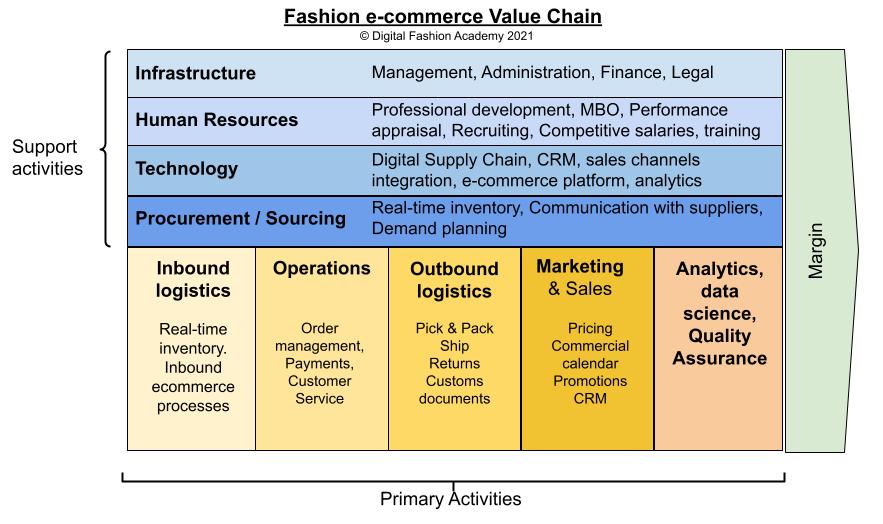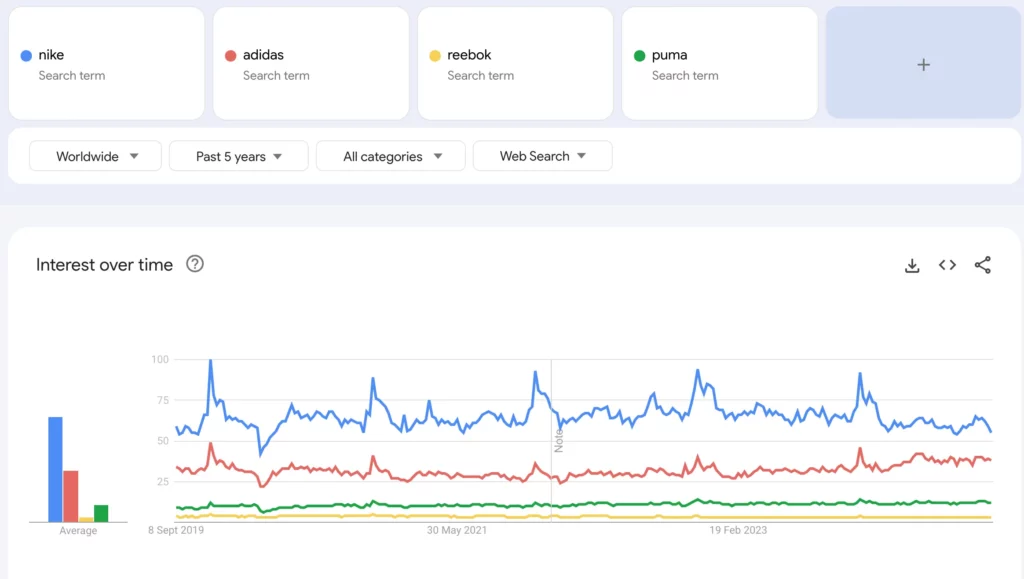Executive Summary
In today’s digital marketplace, a strong online presence is essential for businesses of all sizes. However, navigating the complex world of eCommerce can be challenging. This is where an eCommerce audit comes into play. Think of it as a comprehensive health check for your online store, identifying strengths, weaknesses, and growth opportunities.
Most retail businesses have launched one or more eCommerce initiatives, setting up their websites and selling through various digital channels such as social networks like Instagram and marketplaces like Amazon. Initially, online sales grow slowly, then accelerate and reach a certain volume—a peak.
After a few years, typically two to three years, eCommerce growth slows and then stops. It reaches a plateau and sometimes starts to decline. This is when managers and business owners begin considering an eCommerce audit or assessment.
As an experienced eCommerce manager with expertise in large eCommerce sites like Gucci.com and Yoox.com, I have the necessary experience to create a roadmap that will take your business from point A to point B. (AS IS – TO BE)
What is an eCommerce audit?
What is an eCommerce audit?
An eCommerce audit is a 360° analysis covering all activities within the eCommerce value chain.
The eCommerce Value Chain is a methodology for auditing and strategic planning in eCommerce..

Why does eCommerce slow down?
There are several reasons why eCommerce growth slows after a few years:
Operational inefficiencies – As sales volume grows, your organization may struggle to handle logistics, customer service, payments, and other operations, negatively impacting user experience and customer satisfaction..
Aging and overloaded platform – Over time, adding content, features, bug fixes, and modifications degrades platform performance, just like an old car that doesn’t run as efficiently as a new one.
Competitive pressure – Other brands or retailers may be investing to gain market share in your niche. Competitors may spend more on advertising, offer a wider product selection, or have other competitive advantages.
How is e-commerce audit carried out?
An eCommerce audit is a detailed examination of your online store’s performance. It includes an in-depth analysis of various aspects such as website design, user experience, marketing strategies, and technical SEO. By analyzing these elements, we can identify areas for improvement and develop tailored recommendations for optimization.
Areas covered by an eCommerce audit
- Profit and Loss Analysis
- Marketing Plan Review
- Advertising Performance
- Competitor Analysis
- Market and Trend Analysis
Goals of an eCommerce audit
The primary goals of an eCommerce audit are to:
- Identify strengths and weaknesses – Understand where your store excels and where improvements are needed.
- Optimize conversions – Increase conversion rates by improving the user journey and removing purchase barriers.
- Enhance user experience – Create a seamless and enjoyable shopping experience that encourages repeat customers.
- Improve SEO – Boost search engine rankings and attract more organic traffic.
- Gain valuable insights – Collect data-driven insights to guide future business decisions.
The audit process
An eCommerce audit typically includes the following steps:
- Data Collection – Gathering information on website performance, traffic, and user behavior.
- Analysis – Evaluating data to identify trends, patterns, and areas for improvement.
- Reporting – Providing a detailed report outlining audit findings and recommendations.
Benefits of an eCommerce audit
Investing in an eCommerce audit can bring significant benefits, including:
- Increased revenue – Optimize your online store to drive higher sales and profits.
- Higher customer satisfaction – Create a positive shopping experience that fosters loyalty and retention.
- Improved brand reputation – Build a strong and trustworthy online brand.
- Data-driven decision-making – Make informed business decisions based on solid insights and analytics.

What tools can be used for an eCommerce audit?
Some eCommerce audit tools are freely available online. For example, most of Google’s tools for measuring website speed, SEO, and advertising performance are free. Some data is also publicly accessible and does not require access to company records.
Examples of publicly available tools:
- Google Ads & Meta Ad Libraries – Transparency tools providing insights into competitors’ advertising strategies.
- Google Trends – Useful for analyzing online market trends and comparing brand performance.
For a complete performance assessment, access to internal company data is essential. This includes:
Profit & Loss Statements & Marketing Budgets – To compare planned vs. actual results and benchmark against industry standards.
Google Search Console & Google Analytics – To analyze SEO performance.
What Is an eCommerce Audit and How to Approach It?
This enables brands to enhance performance and drive sustainable growth.
eCommerce audits are customized and designed to improve efficiency, align operations with business goals, and provide strategic recommendations for increased performance and scalability
Objectives and Outcomes of an eCommerce Audit
Typical outcomes of an eCommerce audit include:
✅ Actionable insights to improve performance and drive sustainable growth.
✅ Strategic recommendations to optimize efficiency and scalability.
✅ A prioritized list of short-, medium-, and long-term actions to develop a clear eCommerce roadmap.
✅ Evaluation of the eCommerce value chain, from product assortment to platform functionality, ensuring efficient management of all activities.
Ultimately, an eCommerce audit provides a clear path to optimizing platforms, processes, and strategies, setting businesses up for long-term success
What Problems Can an eCommerce Audit Solve?
An eCommerce audit helps by:
✅ Providing a clear direction with a prioritized list of actions.
✅ Estimating implementation costs to guide budgeting decisions.
✅ Analyzing the expected return on investment (ROI) for each proposed improvement.
By offering a cost-benefit analysis, an audit ensures that businesses can prioritize the most impactful actions, optimizing resources and maximizing growth potential.
What Tools Can Be Used for an eCommerce Audit?
Tools for Demand Analysis & Revenue Generation:
📊 Google Trends – Understand market demand and seasonal trends.
🔍 Google Search Console – Analyze website search performance and keyword rankings.
📈 Google Analytics – Track user behavior, conversions, and traffic sources.
🎥 Hotjar – Visualize customer interactions with heatmaps and session recordings.
📢 Google Ads – Evaluate ad performance and ROI.
📚 Baymard Research – Benchmark UX and checkout best practices.
Tools for Profitability Analysis:
🔗 Value Chain Analysis (Model) – Identify cost drivers and inefficiencies.
📑 P&L Audit (Spreadsheet) – Assess financial performance and profitability.
💰 Digital Marketing Budget Analysis (Spreadsheet) – Optimize marketing spend.
📜 Supplier Analysis (Contracts & SLA Review) – Ensure cost-effective vendor agreements.
Using these tools, an eCommerce audit provides data-driven insights to optimize platforms, processes, and profitability.
How the eCommerce Audit Service Works for Businesses
What Online eCommerce Audit Options Are Available?
- Customized eCommerce Audit
- Online eCommerce Audit
- Self-Service eCommerce Audit (Filling out a questionnaire + online discussion)
Example of a Customized eCommerce Audit
- Definition of key metrics for measuring results in UX and Digital Marketing.
- Website performance analysis across major acquisition channels: SEO, SEM, Social Media.
- Output: Analysis document and presentation with results.
- AS-IS – TO-BE Analysis: Comparison between the current state and the target to be achieved within 1-3 years.
- Roadmap creation: Planning activities for the agreed period.
💰 Fixed Price: £1,000
📌 Free online custom quote available.
🛒 Purchase the self-assessment package online.
How to Approach an eCommerce Audit?
Key Areas of Analysis:
- Technology Stack: Costs, implementation, usage. Includes eCommerce platform, back-office systems, and integrations.
- Trading & Optimization: Upselling, cross-selling, merchandising, personalization, and user behavior analysis.
- External Technology Partners: CMS, loyalty programs, gift cards, analytics, data management.
- Checkout Process: Cart, payment process, localization, gifting, post-purchase user experience.
- Customer Experience (CX): UX, cross-device usability, CRM, email marketing, user-generated content.
- Analytics & Tracking: Tag management, data recording, data accuracy.
- Customer Acquisition: Internationalization strategies, marketing technologies, budget management.
- eCommerce Best Practices: Accessibility, technical SEO, payments, site performance.
Possible Actions Post-Audit
✅ Platform Improvements: UX, payments, logistics, customer service, team reorganization.
✅ Optimization of the eCommerce Value Chain: Product assortment management, platform functionalities, performance enhancement.
Phases of an eCommerce Audit
1️⃣ Initial Call – Understanding the business needs and audit scope.
2️⃣ Signing NDA (Non-Disclosure Agreement) – Ensuring confidentiality of business data.
3️⃣ Objective Discussion – Defining the key goals and expected outcomes.
4️⃣ Market Potential Audit – Analyzing market demand, customer behavior, and growth opportunities.
5️⃣ Competitive Advantage Audit – Benchmarking against competitors to assess strengths and weaknesses.
6️⃣ KPI Audit – Reviewing current performance metrics and business health indicators.
7️⃣ Defining Target KPIs – Setting measurable goals for optimization and growth.
8️⃣ Defining Corrective Actions – Identifying necessary improvements and optimizations.
9️⃣ Developing Strategy & eCommerce Implementation Plan – Creating a roadmap for execution and business success.
Each phase provides structured insights to enhance eCommerce performance and drive sustainable growth.
eCommerce Audit Glossary
🔹 Corrective Actions
Definition: Proactive measures to solve problems and improve eCommerce performance.
📌 Examples of Corrective Actions:
✅ Simplify the checkout process.
✅ Implement cart recovery emails with incentives.
✅ Optimize the speed of the payment page.
✅ Improve the quality of product images and descriptions.
✅ Implement A/B testing to optimize landing pages and product pages.
✅ Control shipping costs to improve profitability.
✅ Optimize site loading speed.
✅ Ensure a mobile-friendly site.
✅ Perform regular site maintenance.
By implementing these actions, an eCommerce business can address weaknesses, improve performance, and achieve its growth objectives. 🚀
Conclusion
An eCommerce audit is a valuable tool for businesses looking to enhance their online performance. By identifying areas for optimization and implementing targeted strategies, you can improve your website’s effectiveness, attract more customers, and drive growth.
Ready to take your eCommerce business to the next level? Contact me today for a free consultation to discuss your specific needs and goals.
